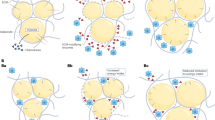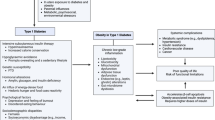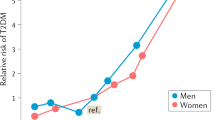Abstract
The insulin resistance syndrome represents a metabolic state in which hyperinsulinemia and/or insulin resistance constitute the platform underlying the development of metabolic complications and related diseases such as diabetes and coronary heart disease. As described in this paper, these insulin-related changes are also involved in the regulation of energy balance and contribute to the recovery of body weight stability in a context of long-term positive energy balance. Under conditions of negative energy balance such as obesity treatment, this connection has a high clinical relevance. In this regard, relevant literature as well as the reanalysis of previously published data suggest that the beneficial effect of weight loss on insulin-related changes in glycemia cannot be disassociated from the relationship between changes in plasma insulin and those in resting energy expenditure. In clinical terms, this suggests that the beneficial effect of weight loss on components of the insulin resistance syndrome could be related to the development of a state of physiological vulnerability that complicates the control of body weight. This poses a major challenge to health professionals who then have to manage obesity treatment as the search for a compromise between the beneficial and potentially detrimental effects of weight loss on insulinemia and insulin sensitivity. This also reinforces the relevance to adhere to healthy diet and physical activity habits in order to maintain body weight stability rather than relying on the overuse of regulatory systems soliciting the effects of hyperinsulinemia on the control of energy intake and expenditure.
This is a preview of subscription content, access via your institution
Access options
Subscribe to this journal
Receive 12 print issues and online access
$259.00 per year
only $21.58 per issue
Buy this article
- Purchase on Springer Link
- Instant access to full article PDF
Prices may be subject to local taxes which are calculated during checkout

Similar content being viewed by others
References
Reaven GM . Role of insulin resistance in human disease. Diabetes 1988; 37: 1495–1507.
Després JP, Moorjani S, Lupien PJ, Tremblay A, Nadeau A, Bouchard C . Regional distribution of body fat, plasma lipoproteins and cardiovascular disease. Arteriosclerosis 1990; 10: 497–511.
Woods SC, Lotter EC, McKay ID, Porte DJ . Chronic intracerebroventricular infusion of insulin reduces food intake and body weight of baboons. Nat Med 1979; 282: 503–505.
Woods SC, Porte DJ . Insulin and the set-point regulation of body weight. In: Novin D, Bray GA, Wyrwichka W (eds). Hunger: Basic Mechanisms and Clinical Implications. Raven Press: New York; 1976. pp 273–280.
Porte D, Woods SC . Regulation of food intake and body weight by insulin. Diabetologia 1981; 20: 274–280.
Woods SC . Insulin and the brain: a mutual dependency. Prog Psychobiol Physiol Psychol 1995; 16: 53–81.
Woods SC, Seeley RJ, Porte DJ, Schwartz MW . Signals that regulate food intake and energy homeostasis. Science 1998; 280: 1378–1383.
Porte DJ, Seeley RJ, Woods SC, Baskin DG, Figlewiez DP, Schwartz MW . Obesity, diabetes and the CNS. Diabetologia 1998; 41: 863–881.
Rowe JW, Young JB, Minaker KL, Steven AL, Pallotta J, Lansberg L . Effect of insulin and glucose infusions on sympathetic nervous system activity in normal man. Diabetes 1981; 30: 219–225.
Berne C, Fagius J, Pollare T, Hemjdahl P . The sympathetic response to euglycemic hyperinsulinemia. Diabetologia 1992; 35: 873–879.
Vollenweider P, Tappy L, Randin D, Schneiter P, Jequier E, Nicod P, Scherrer U . Differential effects of hyperinsulinemia and carbohydrate metabolism on sympathetic nerve activity and muscle blood flow in humans. J Clin Invest 1993; 92: 147–154.
Schwartz MW, Sipols AJ, Marks JL, Sanacora G, White JD, Scheurink A, Kahn SE, Baskin DG, Woods SC, Figlewicz DP, Porte D . Inhibition of hypothalamic neuropeptide Y gene expression by insulin. Endocrinology 1992; 130: 3608–3616.
Benoit SC, Air EL, Coolen LM, Strauss R, Jackman A, Clegg DJ, Seeley RJ, Woods SC . The catabolic action of insulin in the brain is mediated by melanocortins. J Neurosci 2002; 22: 9048–9052.
Doucet E, St-Pierre S, Almeras N, Mauriege P, Despres JP, Richard D, Bouchard C, Tremblay A . Fasting insulin levels influence plasma leptin levels independently from the contribution of adiposity: evidence from both a cross-sectional and an intervention study. J Clin Endocrinol Metabol 2000; 85: 4231–4237.
Air EL, Benoit SC, Clegg DJ, Seeley RJ, Woods SC . Insulin and leptin combine additively to reduce food intake and body weight in rats. Endocrinology 2002; 143: 2449–2452.
Schwartz MW, Peskind E, Raskind M, Boyko EJ, Porte Jr D . Cerebrospinal fluid leptin levels: relationship to plasma levels and to adiposity in humans. Nat Med 1996; 2: 589–593.
Seeley RJ, Yagaloff K, Fisher S, Burn P, Thiele T, van Dijk G, Baskin D, Schwartz M . Melanocortin receptors in leptin effects. Nature 1997; 390: 349.
Boden G, Chen X, Kolaczynski JW, Polansky M . Effects of prolonged hyperinsulinemia on serum leptin in normal human subjects. J Clin Invest 1997; 100: 1107–1113.
Saad MF, Khan A, Sharma A, Michael R, Riad-Gabriel MG, Boyadjian R, Jinagouda SD, Steil GM, Kamdar V . Physiological insulinemia acutely modulates plasma leptin. Diabetes 1998; 47: 544–549.
Tremblay A, Nadeau A, Després J-P, Bouchard C . Hyperinsulinemia and regulation of energy balance. Am J Clin Nutr 1995; 61: 827–830.
Swinburn B, Nyomba BL, Saad MF, Zurlo F, Raz I, Knowler WC, Lillioja S, Bogardus C, Ravussin E . Insulin resistance associated with low rates of weight gain in Pima Indians. J Clin Invest 1991; 88: 168–173.
Schwartz MW, Boyko EJ, Kahn SE, Ravussin E, Bogardus C . Reduced insulin secretion: an independent predictor of body weight gain. J Clin Endocrinol Metabol 1995; 80: 1571–1576.
Tremblay A, Doucet E . Obesity: a disease or a biological adaptation? Obes Rev 2000; 1: 27–35.
Doucet E, St-Pierre S, Alméras N, Després J-P, Bouchard C, Tremblay A . Evidence for the existence of adaptive thermogenesis during weight loss. Br J Nutr 2001; 85: 715–723.
Ravussin E, Lillioja S, Knowler WC, Christin L, Freymond D, Abbott WGH, Boyce V, Howard BV, Bogardus C . Reduced rate of energy expenditure as a risk factor for body-weight gain. N Engl J Med 1988; 318: 467–472.
Pasman WJ, Saris WH, Westerterp-Plantenga MS . Predictors of weight maintenance. Obes Res 1999; 7: 43–50.
Eckel RH . Insulin resistance: an adaptation for weight maintenance. Lancet 1992; 340: 1452–1453.
Acknowledgements
A Tremblay is partially funded by the Canada Research Chair on Physical Activity, Nutrition, and Energy Balance. NG Boulé is supported by a postgraduate scholarship from NSERC Canada.
Author information
Authors and Affiliations
Corresponding author
Rights and permissions
About this article
Cite this article
Tremblay, A., Boulé, N., Doucet, É. et al. Is the insulin resistance syndrome the price to be paid to achieve body weight stability?. Int J Obes 29, 1295–1298 (2005). https://doi.org/10.1038/sj.ijo.0803019
Received:
Revised:
Accepted:
Published:
Issue Date:
DOI: https://doi.org/10.1038/sj.ijo.0803019
Keywords
This article is cited by
-
Impact of dietary glycemic challenge on fuel partitioning
European Journal of Clinical Nutrition (2017)
-
Enhanced insulin sensitivity in successful, long-term weight loss maintainers compared with matched controls with no weight loss history
Nutrition & Diabetes (2017)
-
Carbohydrate intake and glycemic index affect substrate oxidation during a controlled weight cycle in healthy men
European Journal of Clinical Nutrition (2014)
-
Vitamin D and calcium-sensing receptor polymorphisms differentially associate with resting energy expenditure in peripubertal children
Journal of Bone and Mineral Metabolism (2013)
-
Resistant starch and exercise independently attenuate weight regain on a high fat diet in a rat model of obesity
Nutrition & Metabolism (2011)



